Get to know Colorado by visiting the 10th mountain Division Huts!
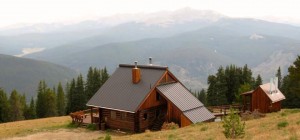
Trailhead Directions and Details
Take special care with trailhead location. Allow extra time the morning of your trip in case the trailhead is not plowed or otherwise difficult to find or use. Check “New & News” on this website for critical trailhead changes. As parking at trailheads is often limited, please carpool or use a shuttle service whenever possible. Click here for GPS information.
ATTENTION HUT USERS: Due to break-in’s at a few of our trailheads we stongly urge all hut users not to leave anything of value in your car. If you must leave something in your car make sure it is either locked in your trunk or well out of sight.
Aspen Area Trailheads
Hunter Creek Trailhead
ELEVATION: 8,380 feet
10TH MTN MAP: Smuggler Mtn
USGS MAP: Aspen
To reach the Hunter Creek Trailhead, start in the town of Aspen. Follow Main Street in Aspen to Mill Street (the stoplight near the center of town, next to the Hotel Jerome). Turn N on Mill and drive a short distance down a hill, then across a bridge over the Roaring Fork River (.25 miles). Bear left after the bridge and follow the Red Mountain Road 1 mile to its second switchback. Just before the switchback, turn right and downhill on the Hunter Creek Road. Drive approximately .3 miles on Hunter Creek Road, then take a hard left on an unpaved driveway that leads up past a water tank 300 feet to a parking area. The actual trailhead is farther up the mountain, but this is the only parking.
You have several choices for foot travel to the actual trailhead. The simplest method is to walk back down the driveway to the Hunter Creek Road, turn left through two stone gate posts marked “Private,” and follow the paved Hunter Creek Road 1/3 mile around a hairpin switchback to the well-signed Hunter Creek Trailhead on the right side of the road. Your other choice for foot travel is to follow a foot trail that traverses up the mountain from the parking area to the trailhead.
Print These Directions
New Upper Hunter Creek Trailhead
ELEVATION: 8,400 feet
10TH MTN MAP: Smuggler Mtn
USGS MAP: Aspen
For the New Upper Hunter Creek Parking Area follow Hunter Creek Road up Red Mountain (See Hunter Creek TH directions) and go NE through the stone pillars continuing up Red Mountain Road for approximately 6/10th of a mile to a 3-way intersection. Take a very hard tight turn, and continue E 1/4th of a mile through two sharp swithbacks. You are now on private property. Please respect the homeowners and use the linked map to find the parking area. Do not enter private, marked driveways and do not cross the bridge. Upper Hunter Creek Trailhead Map
Print These Directions
PLEASE NOTE THESE IMPORTANT RULES FOR THE NEW PARKING AREA:
This is intended primarily as a skier drop-off area. Be prepared to drop your gear here and return your car to the Hunter Creek Parking area. There are a total of four (4) parking spaces in the skier drop-off area. Two are designated parking spots for 10th Mountain Division Hut users. One is for senior citizens and the last is for handicap parking. The parking spots are on a first-come first-served basis. If you are using it for overnight parking you must leave a copy of your confirmation sheet on the dashboard of your car showing the designated night(s) you will be at the hut. Your car may be ticketed or towed if you a) do not leave proof of hut use or b) are illegitimately parked in the senior or handicapped parking spot. Four-wheel drive is recommended.
Lenado Trailhead
ELEVATION: 8,640 feet
10TH MTN MAP: Smuggler Mtn.
USGS MAP: Aspen
From Glenwood Springs/I-70, travel east on Hwy 82 approximately 32 miles to Smith Way. (From Aspen, this intersection is approximately 8 miles west of Aspen). Note that this intersection is located .8 mile west of the turn-off to Snowmass Village/Snowmass Ski Area. Travel downhill on Smith Way for .5 mile, cross the Roaring Fork River, and continue to a 3-way intersection. Turn left (north) at Upper River Road, (CR 17) and travel North for 1.5 miles to the sharp right turn (east) onto the Woody Creek Road CR 18. Proceed approximately 8.4 miles through Lenado to the marked 10th Mountain winter hut parking area on your right. A sign, and a chain with a lock, marks the parking area. The combination for the lock on the chain is the same as the hut combination.
Print These Directions
Fryingpan River Drainage Trailheads
Spring Creek Trailhead
ELEVATION: 8,440 feet
10TH MTN MAPS: Mount Yeckel, Burnt Mountain
USGS MAP: Meredith
From the 4-way stop sign in Basalt at Two Rivers Road and the Fryingpan River Road, follow the Fryingpan River Road approximately 25 miles to the Eagle-Thomasville Road #400. Parking is available just east of the turn off to Road #400. Do not attempt to drive this road when it is wet, even with 4-wheel drive. This road is impassible when wet!
Print These Directions
Montgomery Flats
ELEVATION: 8,250 feet
10TH MTN MAPS: Mount Yeckel, Burnt Mountain
USGS MAP: Meredith
From the 4-way stop sign in Basalt at Two Rivers Road and the Fryingpan River Road, follow the Fryingpan River Road approximately 26 miles to a marked driveway on the North side of the road (the street number is 26501). Please park in the plowed designated area for hut users and do not block the driveway. From the parking area, follow the driveway northeast for 0.1 miles, then pick up the marked trail on the right. Please follow this marked trail and respect private property.
Print These Directions
Diamond J Trailhead
ELEVATION: 8,250 feet
10TH MTN MAPS: Mount Yeckel, Burnt Mountain
USGS MAP: Meredith
Parking for the Harry Gates Hut was changed in 2002. The new parking is 0.3 miles west (down valley) from the Diamond J Ranch. Please see Montgomery Flats Trailhead for more information.
Burnt Mountain Road Trailhead
ELEVATION: 8,830 feet
10TH MTN MAP: Mount Yeckel, Burnt Mountain
USGS MAP: Nast, Meredith
From the 4-way stop sign in Basalt at Two Rivers Road and the Fryingpan River Road, follow the Fryingpan River Road approximately 26.5 miles to a Y fork in the road known as the Biglow (on USFS map). A sign indicates Elk Wallow Campground. Take the left fork (North Fork Road #501) and drive 2.6 miles to where the well-signed Burnt Mountain Road (#506) turns off to the left (north).
Print These Directions
Norrie Trailhead
ELEVATION: 8,440 feet
10TH MTN MAP: Mount Yeckel
USGS MAP: Meredith
From the 4-way stop sign in Basalt at Two Rivers Road and the Fryingpan River Road, follow the Fryingpan River Road approximately 27.5 miles to the sign that says Norrie Colony. Turn right (west), travel across the bridge, and then up a short hill. At the top of the short hill there should be a plowed area. Park in the plowed area – DO NOT block the private driveway. The road to Twin Meadows leaves this area southwest of the short hill.
Print These Directions
Granite Lakes Trailhead
ELEVATION: 8,760 feet
10TH MTN MAP: Mount Yeckel, Upper Fryingpan
USGS MAP: Nast
From the 4-way stop sign in Basalt at Two Rivers Road and the Fryingpan River Road, follow the Fryingpan River Road approximately 31.5 miles to signs for Fryingpan River Ranch and for Nast Lake/Granite Lakes Trailhead. After the turnoff, a winding dirt road leads 1.1 miles to the obvious buildings of the ranch. This road has several steep switchbacks, so 4-wheel drive is recommended during snow season.
The Granite Lakes Trailhead is just after the bridge. For the trail to Twin Meadows and Margy’s Hut, follow the marked trail around Nast Lake and begin climbing S.W.
Print These Directions
Road 505 Trailhead
ELEVATION: 9,120 feet winter; 10,040 feet summer
10TH MTN MAP: Upper Fryingpan
USGS MAP: Nast, Mt. Champion
Road 505 is a dirt spur off the paved Fryingpan Road. It was built for maintenance on the Fryingpan/Arkansas water diversion project. In winter it remains snow-covered and is shared by skiers and snowmobilers.
From the 4-way stop sign in Basalt at Two Rivers Road and the Fryingpan River Road, follow the Fryingpan River Road approximately 32 miles to an obvious parking area on the right. A sign at the parking area says Fryingpan Lakes.
Print These Directions
Hagerman Pass Road Trailhead
ELEVATION: 9,200 feet
10TH MOUNTAIN MAP: Upper Fryingpan
USGS MAP:Nast
The Hagerman Pass Road Trailhead is at the start of the Hagerman Pass Road, which connects Leadville and the Fryingpan valley. From the 4-way stop sign in Basalt at Two Rivers Road and the Fryingpan River Road, follow the Fryingpan River Road 32.1 miles to the end of the pavement, then follow Hagerman Pass Road around the sweeping bend to the left.
Print These Directions
Trailheads reached from Interstate Highway 70
West Lake Creek Trailhead
ELEVATION: 10,300 feet
10TH MTN MAPS: Summer Eagle
USGS MAP: Fulford
From the I-70 Edwards exit (#163), travel south 1/2 mile to Highway 6. Drive W on Highway 6 .7 miles to Lake Creek Road. Turn S (left) and drive 1.7 miles to West Lake Creek Road junction. Turn right and continue 1.5 miles to the end of the pavement and another 1.1 miles to the parking area at switchback. (8220′). Please Note: This trail passes through wilderness areas where we are unable to mark the trail with blue diamonds. This, along with the fact that this route is seldom traveled, can make for very difficult route finding and is not a trail we recommend for inexperienced or first time hut-users.
Print These Directions
Sylvan Lake Trailhead
ELEVATION: 8,558 feet
10TH MTN MAP: Burnt Mountain
USGS MAP: Crooked Creek Pass
From the Eagle exit (#147) on I-70 drive south .2 miles to the roundabout. Drive 1.0 mile west on Hwy 6 until the roundabout and exit on Sylvan Lake Road. Travel 1.6 miles and take a right on Brush Creek Road (aka Eagle County Road #307). Travel 8.7 miles to a “Y” intersection. Take the right fork (West Brush Creek Road) and drive 4.6 miles to Sylvan Lake. Sylvan Lake is a small state park where you’ll find good car camping, small cabins for rent, and bathrooms.
Print These Directions
Yeoman Park Trailhead
ELEVATION: 9,060 feet
10TH MTN MAP: New York Mountain
USGS MAP: Fulford
From the Eagle exit (#147) on I-70 drive south .2 miles to the roundabout. Drive 1.0 mile west on Hwy 6 until the roundabout and exit on Sylvan Lake Road. Travel 1.6 miles and take a right on Brush Creek Road (aka Eagle County Road #307). Travel 8.7 miles to a “Y” intersection. Take the left fork (East Brush Creek Road) and drive approximately 6 miles to Yeoman Park. Turn right off of the main road and travel a few hundred feet along a short spur road (over a bridge) to the obvious parking area.
Print These Directions
Vail Trailhead for Commando Run
ELEVATION: 8,220 feet
USGS MAP: Vail East
The Vail Trailhead for the Commando Run is not signed, but it’s fairly easy to find. Follow I-70 to the main Vail Exit (Exit 176) at Vail Resort. Take the exit, then travel south to a traffic circle. Turn east out of the traffic circle onto the frontage road and drive .4 miles E to an intersection marked with an oversized stop sign. Turn right (S) here and follow Vail Valley Drive .4 miles to parking at the Golden Peak Children’s Skiing Center at the base of lifts 6 and 12. In the winter parking is highly regulated, so check the parking rules when you get there.
At any rate, you can skin up the ski area from here to start the Commando Run in Mill Creek. This is a grueling start for such a nice tour, so consider accessing the Commando Run from the Vail ski lifts. There has been talk for years of a one-ride ticket for just that purpose, so check for this option. To reach the Commando Run from the lifts you can get into Mill Creek from the top of lift 6; or take a more roundabout route, finally using the Orient Express Lift to reach the west ridge of Siberia Peak. In the summer you can ride the Vail Gondola most of the way up the mountain, then hike the ridge to Siberia Peak. Cyclists can take their bike up the Gondola and ride across the ski area to the Mill Creek Road.
Print These Directions
Vail Pass Trailhead
ELEVATION: 10,580 feet
10TH MTN MAP: Resolution Mountain
USGS MAP: Vail Pass
To reach the Vail Pass Trailhead, drive I-70 14.3 miles east from Vail or 5.4 miles west from Copper Mountain Resort. Take Exit 190 and park at the indicated overnight parking area. The Shrine Pass Road leaves from the parking area. It has good signage and is well used. Please note: For winter trips, hut-users must use the non-motorized winter-use trail to access the huts. Use of the motorized winter-use trail (Shrine Pass Road) may result in a $100 fine.
Print These Directions
Boreas Pass Trailhead
ELEVATION: 10,350 feet
10TH MTN MAP: Boreas Pass
USGS MAPS: Breckenridge, Boreas Pass
From the intersection of Highway 9 (Main St) and Boreas Pass Road (County Rd. 10) in Breckenridge travel east for 3.7 miles to the winter trailhead parking area.
Section House Reservation Info
Ken’s Cabin Reservation Info
Print These Directions
Copper Mountain Trailhead
ELEVATION: 9,820 feet
10TH MTN MAP: Resolution Mountain
USGS MAPS: Copper Mountain, Vail Pass
Parking: Summit Huts Association appreciates the generosity of Copper Mountain Resort in allowing hut guests to park at Copper Mountain. Park in the Alpine Lot (formerly known as East Lot), just off Highway 91. Directions: turn into the main Copper Mountain Resort entrance and make your first left into the north end of the Alpine Lot. Park in the area near the Transportation Center, which is designated for Janet’s Cabin. Post your parking permit on the dash and make extra copies if your group requires more than one vehicle. Take the free shuttle from the Transportation Center to Union Creek.
Janet’s Cabin Parking Pass and Info
Print These Directions
Red Sandstone Creek Trailhead
ELEVATION: 8,620 feet
10TH MTN MAP: Gore Range
USGS MAPS: Vail West, Vail East
Drive Interstate Highway 70 to the Vail Resort. Take the main Vail exit (#176). After exiting, turn north and drive a short distance to the frontage road (rather than heading into Vail). Drive the frontage road 1 mile west, then take a right on the Red Sandstone Creek Road. For the most reliable parking, head up Red Sandstone Creek Road .3 miles to a parking area on the left at a major switchback. If you park here, you’ll need to walk .4 miles on plowed pavement up and around another switchback to the start of the true Red Sandstone Creek Road, then an additional .6 miles on a plowed dirt road to the closure gate. To avoid walking the road, it’s worth exploring parking options farther up the road, especially in spring or during years with less snowfall. To do so, it’s prudent to use a 4-wheel-drive vehicle.
Print These Directions
Spraddle Creek Trailhead (for Eiseman Hut)
ELEVATION: 8,480 feet
10TH MTN MAP: Gore Range
USGS MAPS: Vail West, Vail East
Drive Interstate Highway 70 to the Vail Resort. Take the main Vail exit (#176). After exiting travel north to the roundabout and turn east onto Spraddle Creek Road. You’ll immediately see a Forest Service overflow parking area on your left (note this and use later if needed). Continue up the steep paved road .7 miles to the Spraddle Creek Estates entrance gate. Leave the pavement here by taking a hard right on the well signed Spraddle Creek dirt road, and continue .1 mile to the Spraddle Creek Ranch parking area. Be advised there is no parking at the Spraddle Creek Estates entrance gate. Parking at the Lower Spraddle Creek parking area can be difficult because of the popularity of this parking area. Please carpool and use the Upper Spraddle parking area if possible. Free overnight parking can be found at Red Sandstone Park, located 1 mile west of the main Vail exit (#176) at the intersection of Red Sandstone Creek Road and the frontage road. Free bus service (970-479-2178) is available along the frontage road.
Print These Directions
Trailheads from Highway 24 & Leadville
Red Cliff Trailhead
ELEVATION: 8,680 feet
10TH MTN MAP: Resolution Mountain
USGS MAP: Red Cliff
Drive I-70 5 miles W from Vail Resorts or 55 miles E from Glenwood Springs to the Minturn exit (Exit 171). Travel south on Hwy 24 approximately 10 miles to a left turnoff that leads a short distance down into a canyon and into Red Cliff. The Shrine Pass Road leaves from the northeast corner of Red Cliff. It is poorly signed but fairly obvious. If in doubt, ask any local where it is, and the USGS map shows it clearly as the only road up Turkey Creek. Once you find the Shrine Pass Road, the best place to park is in Red Cliff on any side street or in the lot by the Marshal’s office. You can also drive just over a mile up the Shrine Pass Road to the water tank
Print These Directions
Pando Trailhead
Elevation: 9,200 feet
Camp Hale Trailhead
Elevation 9,250 feet
South Camp Hale Trailhead
Elevation: 9,280 feet
10TH MTN MAP: Chicago Ridge
USGS MAP: Pando
These trailheads are located at the site of former Camp Hale, a huge, 3-mile long flat area on the Eagle River a few miles north of Tennessee Pass. Fifty years ago Camp Hale was home for two years to the men of the 10th Mountain Division of the U.S. Army, for which the 10th Mountain Division Hut and trail system is named. Only road-cuts and a few foundations remain.
Drive I-70 5 miles W from Vail Resort or 55 miles E from Glenwood Springs and turn off at the Minturn Exit (Exit 171) onto Highway 24. Travel south on Hwy 24 approximately 15 miles and look for a distinct parking area to your left with a sign reading “Resolution Road.” This is the Pando Trailhead. You won’t find a bridge over the river, but it might be worth looking for a snow bridge. Such bridges are more likely in mid winter. Your other option to ski 1/2 mile south to a vehicle bridge and then ski back up to McCallister Gulch. Please note: vandalism to vehicles was reported at this trailhead in February 2010.
To reach the Camp Hale Trailhead, continue from the Pando Trailhead 1.5 miles S on Highway 24 to mile marker 160. Look to your left for two stone gate posts and a plaque. Again, parking is straightforward and there is a great year-round permanent bridge at this trailhead.
For the South Camp Hale Trailhead, continue S on Highway 24 for .7 miles past the Camp Hale Trailhead. Look to your left for another distinct parking area. Again, you won’t find a bridge over the river, but due to the distance this trailhead can save you, it might be worth looking for a snow bridge. Such bridges are more likely in mid winter. Boggy ground exists in this area as well, and needs a thick mid-winter snowpack for coverage.
To reach these trailheads from the south (Leadville) drive highway 24 over Tennessee Pass to Camp Hale. The South Camp Hale Trailhead is 5.1 miles north of Tennessee Pass on Highway 24. Use the connection mileages above to find the other two trailheads.
Print These Directions
Tennessee Pass Trailhead
ELEVATION: 10,424 feet
10TH MTN MAP: Chicago Ridge, Galena Mountain
USGS MAP: Leadville North
Drive I-70 5 miles W from Vail Resorts or 55 miles E from Glenwood Springs to the Minturn exit (Exit 171). Follow Hwy 24 for approximately 22.5 miles to the well-signed Tennessee Pass. Parking is obvious on the west side of the road opposite the turnoff to Ski Cooper. If you’re coming from the south (Leadville), travel 8.9 miles north from the junction of of Hwy 24 and 91 to Tennessee Pass.
Print These Directions
Ski Cooper Trailhead
ELEVATION: 10,570 feet
10TH MTN MAP: Chicago Ridge, Galena Mountain
USGS MAP: Leadville North
To reach the Ski Cooper Trailhead from the north (I-70), drive I-70 5 miles W from Vail Resorts or 55 miles E from Glenwood Springs to the Minturn exit (Exit 171). Follow Hwy 24 for approximately 22.5 miles to the well-signed Tennessee Pass and the obvious road to Ski Cooper. To reach this trailhead from the south (Leadville), follow Hwy 24 north 8.9 miles from the junction of Hwy 24 and 91 (at the north end of Leadville) to Tennessee Pass. Travel 1/3 mile from the highway to the Ski Cooper parking area. Trailhead parking for Vance’s and Sangree’s is on the right side after you go through an entrance gate. Notes: 1. If you’re headed for Vance’s Cabin, there is NO parking at Forest Service Road #731. 2. You may encounter Ski Cooper snowmobiles and/or snowcats on the first ¾ mile of the suggested routes to Vance’s and Sangree’s. Please expect and respect all users.
Print These Directions
Crane Park Trailhead
ELEVATION: 10,137 feet
10TH MTN MAP: Chicago Ridge, Continental Divide, Galena Mountain
USGS MAP: Leadville North
Crane Park Trailhead : From the top of Tennessee Pass go south on Hwy 24 1.6 miles and turn right (west) off the highway onto a dirt road. There is a sign mounted on an antique road-grader for Webster’s Sand and Gravel. The most reliable and secure parking is in an obvious area within sight of the main road. To reach the Crane Park Trailhead from Leadville, follow the directions for Tennessee Pass Trailhead from Leadville via Hwy 24. About 7.3 miles from the junction of Hwy 24 and 91 at the north end of Leadville take a left onto the aforementioned road with the sign for Webster’s Sand and Gravel.
Print These Directions
Turquoise Lake Trailhead
ELEVATION: 9,760 feet
10TH MTN MAPS: Galena Mountain, Continental Divide
USGS MAP: Leadville North
From Hwy 24 and Mountain View Drive on the north end of Leadville, drive 2.8 miles west on Mtn. View Drive to a “T” intersection. Turn north (right) and cross the East Fork of the Arkansas River. Continue N 0.5 miles to the large parking area on the right.
Print These Directions
Trailhead from Highway 91 & Leadville
Buckeye Gulch Trailhead (for Sangree M. Froelicher Hut)
ELEVATION: 10,180 feet
10TH MTN MAPS: None
USGS MAP: Leadville North Quadrangle
The parking lot for the Sangree M. Froelicher Hut is on the north side of Highway 91 between mile markers 4 and 5. It is 4.6 miles from the junction of Highways 24 and 91 in Leadville, and 19.5 miles from Highway 91 and I-70 (Copper Mountain). It is marked with a 10th Mountain Parking sign visible from the highway and “Public Parking” signs are found at the parking area. PLEASE NOTE THAT THE FIRST 1/3 MILE OF THE SUGGESTED ROUTE FROM THE PARKING LOT TO THE HUT IS ON PRIVATE PROPERTY: RESPECT PRIVATE PROPERTY AND DO NOT TRESPASS. NOTE THAT PARKING IS NOT AVAILABLE ANYWHERE ALONG BUCKEYE GULCH ROAD AND VIOLATORS MAY BE TOWED AT THEIR EXPENSE.
Print These Directions
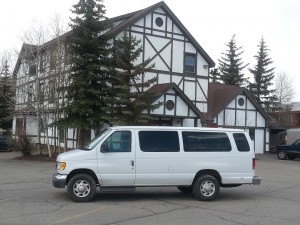

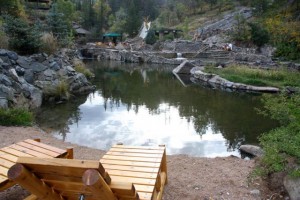
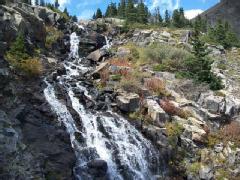





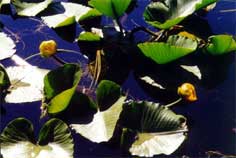

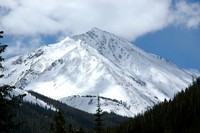

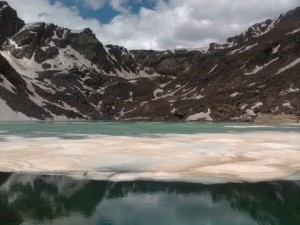
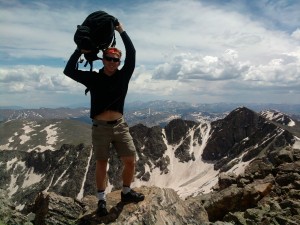
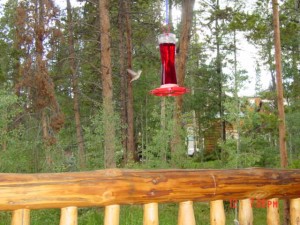
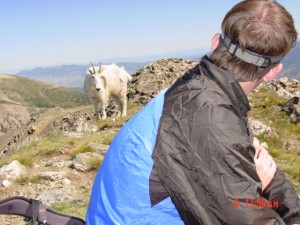

Torreys Peak Summit Teams Sponsored by the Lodges!
The trail to the Summit!
The Ridge!
Posted by Justin Patnode on September 7, 2010 in Guest Comments, Share Your Trip, Trails and hiking near the Lodges!
Comments Off on Torreys Peak Summit Teams Sponsored by the Lodges!